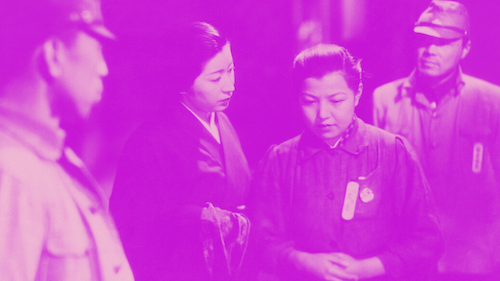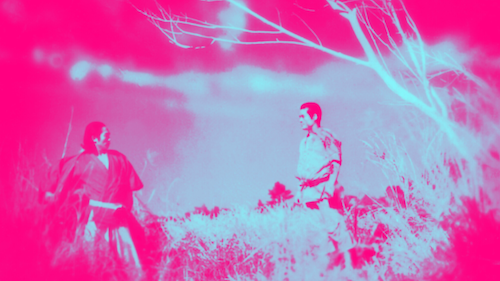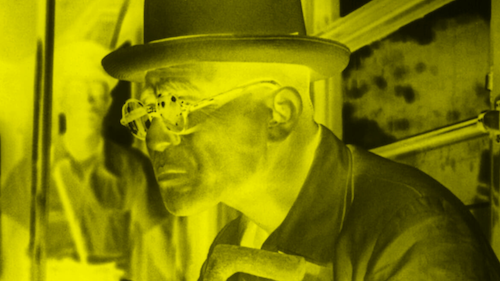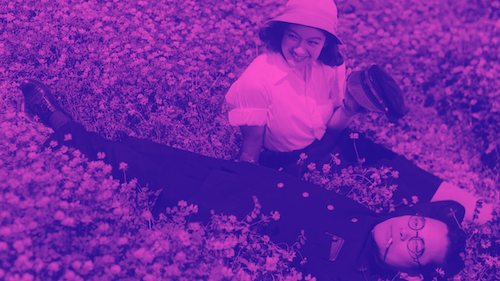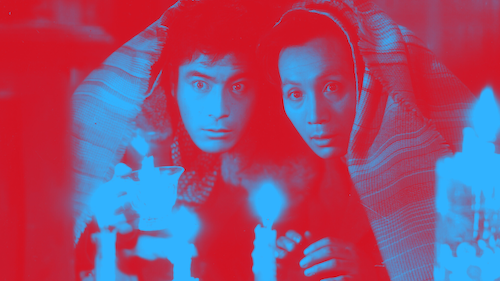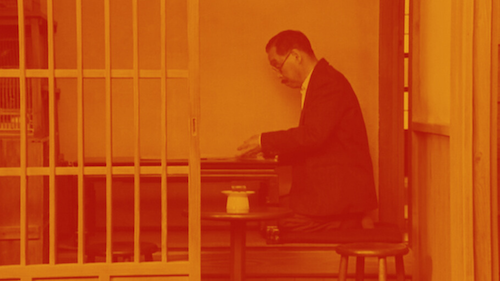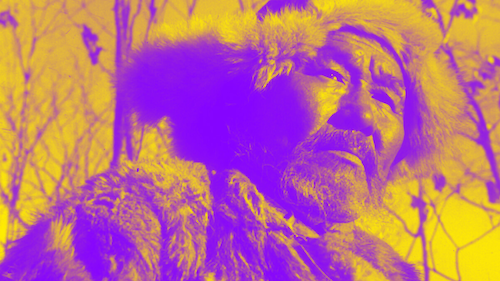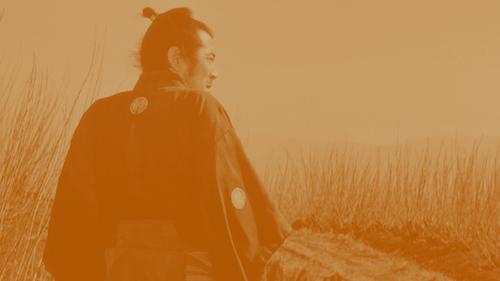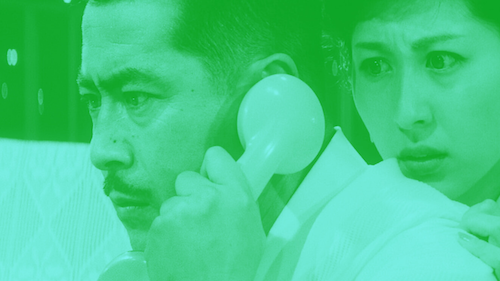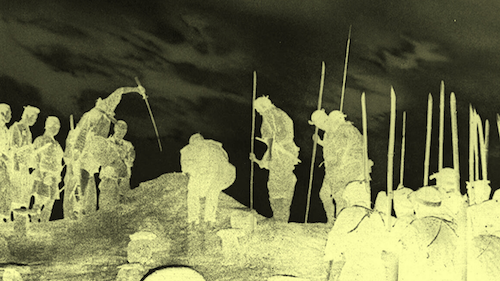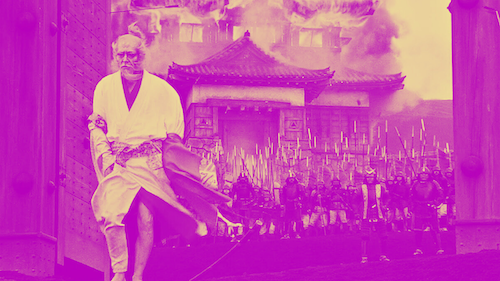Filmography Worship: Ranking Every Akira Kurosawa Film
Written by Andreas Babiolakis
Filmography Worship is a series where we review every single feature of filmmakers who have made our Wall of Directors (and other greats)
It feels obvious to say that Akira Kurosawa is one of the greatest filmmakers of all time (as well as point out that he is a personal favourite of mine), but here we are. It’s being stated because it is true, and I will never not seize the opportunity to honour an all-time legend and innovator of the cinematic medium when an opportunity arises. Seeing as today marks the twenty sixth anniversary of the auteur’s passing (by the time this article is published), there’s no greater opportunity to celebrate Akira Kurosawa (then again, any day seems appropriate when you love motion pictures). The biggest influence on action films, period piece dramas, war epics, how black-and-white films can be conceived, the art of cinematic direction overall (and the pivot of artistic control from producers to directors), and so many other parts of the filmic experience, Kurosawa’s impact cannot be simplified in any random article like this one. I will still try my best to replicate his importance in the ranking of his films, but it won’t do his history and legaacy any noteworthy justice.
Kurosawa found beauty, humanity, and purpose in devastation at a young age, when his older brother, Heigo (who died at the young age of twenty seven, and before Kurosawa began making motion pictures) took him to see the wreckage and wake of the Great Kantō earthquake of 1923; there, Kurosawa saw the power of images and what can be conveyed by sight and without being told how to feel. Having been driven to want to make fine art before motion pictures, Kurosawa was further inspired by his elder brother as the latter narrated silent films in the early days of the Japanese cinema scene; Kurosawa found that film displayed art throughout its medium as a result. He fell out of love of painting as well, as the politics of the world around him tainted waht he could put on the canvas; it was inescapable. So were other turmoils, including brother Heigo losing work after the start of talking pictures; due to his struggles, Heigo ultimately committed suicide, which permanently changed Akira Kurosawa.
Kurosawa became an assistant director a few years later, likely because he and his family were in desparate need of money after numerous woes during a hard time in Japan. This is where Kurosawa began to soar, with his first feature film, Sanshiro Sugata, being released in 1943. While training as an assistant director, he was taught by mentors that to get the best grasp on filmmaking, one should become a strong storyteller (or choose stories from those who were). This early action film’s original story spoke to him, and it’s a thread that would continue in Kurosawa’s life. He was inspired and fascinated by the Russian literary classics (you’ll find numerous adaptations below), amongst other powerful tales. He knew that film could be not just art but a storytelling vehicle as well. After Sanshiro Sugata, Kurosawa experimented a bit to find his footing. It wouldn’t be long before he would.
I don’t need to say much about his prime, because he dominated the fifties with many masterpieces (most of which you will find near the top of this ranking). He was on top of the world, even during a time when international cinema wasn’t getting quite the reach that it deserved (Rashomon was a big reason why the Academy Awards created a category for films not in the English language, because of hits massive influence and reception). Even with this dominance, the film industry is a fickle and unforgiving one. After decades of masterwork after masterwork, Kurosawa tried to make something different with Dodes'ka-den in 1970. The sillier tone of the film, the financial risk, and numerous aesthetic gambles (including the first use of colour in a Kurosawa film) resulted in a terrible reception, and Kurosawa nearly followed in his older brother’s footsteps when he attempted — and survived — suicide.
It goes without saying that Kurosawa endured numerous hardships, and he would continue to do so. Even after all of the brilliance and innovation he gave to the film industry, he truly struggled after Dodes'ka-den to regain his dominance. He released just one more film in the seventies: the Soviet-funded Dersu Uzala (which, by the way, is a criminally underrated film). It took the students of his craft, filmmakers like Francis Ford Coppola and George Lucas who were indebted to the works of Kurosawa (Lucas’ Star Wars is heavily inspired by The Hidden Fortress, for starters), to help Kurosawa get his epic Kagemusha to be made (the film, which studios tried to avoid, wound up winning the Palme d’Or at the Cannes Film Festival). Even with this help and renaissance, he suffered. His wife of nearly forty years, Yōko Yaguchi, died during the production of Ran in 1985. The same film was meant to be Japan’s entry for Best International Feature Film at the Academy Awards — the very category Kurosawa’s talent helped inspire — and the Japanese government decided to punish him after he didn’t attend the film’s premiere at the very first Tokyo International Film Festival. And so it goes.
Again, it was the filmmakers Kurosawa inspired to make motion pictures who came to the rescue, with Sidney Lumet pushing for a campaign to get the titan nominated for Best Director (he, ultimately, lost to Sydney Pollack for Out of Africa, which boggles my mind to this day). From that point on, it was as if Kurosawa fell in love with film — and life — all over again, proclaiming that he was finally understanding what makes a good film. All of his nineties films feel limitless (for better or for worse) and full of both heart and artistry. Unfortunately, he slipped and broke his spine in 1995, paralyzing himself from the waste down and needing a wheelchair. He wanted to die while working on a film, but the accident prevented him from making another film after 1993’s Madadayo. Kurosawa would eventually pass away at eighty eight in 1998 after complications from his accident persisted for years. It breaks my heart how much distress Kurosawa experienced in his life when his works and lessons have brought joy, meaning, and enrichment to millions — maybe even billions — of lives.
This quick synopsis of Kurosawa’s history won’t do him any justice, because his legacy is far more complicated, detailed, and interesting than my blurbs could ever muster. I just wanted to give a bit of context to the works of a man whose existence and drive has meant the world to almost every cinephile to ever walk the Earth. Perhaps I am stalling, because ranking all thirty of his accessible films (I will be avoiding Those Who Make Tomorrow, which is seemingly lost despite being showcased at the National Museum of Modern Art, Tokyo in 2004) seems like a highly difficult order. I will admit that over a dozen of his films are challenging to place in order, because they are all near-perfect to spotless. However, my number one film has been my favourite of his for most of my life, and that was the only easy selection for me. I feel like every Kurosawa fan has their one favourite that somehow speaks more to them than the other films, and I apologize in advance if I have placed yours lower on the list than you would like. You can imagine the caliber of the works you’re about to read about. Here are all of the feature films of Akira Kurosawa ranked from worst (or least best, I suppose) to best.
30. The Most Beautiful
Even the worst Kurosawa film is moderately watchable. A propaganda film which is as cold as that label usually infers (although Kurosawa does try his absolute best to elevate the film of any such corrosion), The Most Beautiful is clearly driven by the mindset that was bestowed upon Kurosawa, not his own artistry (although, even in this mediocre effort, his vision does shine enough to be noticeable). Allegedly, Kurosawa retained fond memories of this film, but I can’t say the same for most film viewers.
29. The Men Who Tread on the Tiger's Tail
While the auteur would become the master of the period drama (maybe the greatest to ever approach the style), Kurosawa’s early effort, The Men Who Tread on the Tiger’s Tail, feels a bit like a mish-mash of ideas and concepts whilst also being incredibly simplistic by Kurosawa’s standards. Still, this is a decent enough film by a master that warrants a watch should you try to complete watching every Kurosawa film, but, as noble as this film is, it should be left towards the end of your marathon of the director’s films (unless you want to conclude with a bang, of course).
28. Sanshiro Sugata Part II
While not quite as good as the first part (just barely), Sanshiro Sugata Part II is a film that is fine narratively (I suppose it’s because it feels a teensy bit derivative of Kurosawa’s earliest film, which in and of itself is also just okay to begin with). However, I cannot shake off the early signs of artistic richness that can be found even in a film that is far from Kurosawa’s greatest work; the imagery from the climax still resonate in my mind, despite the fact that I have only ever watched Sanshiro Sugata Part II once in my life. If you are curious about finding the seedlings of what Kurosawa would use to make the ultimate action films, these two films are a good place to discover them.
27. Sanshiro Sugata
As stated previously, Sanshiro Sugata and its sequel are great little treasure troves of ideas that Kurosawa would eventually turn into fully-fledged mastery. Still, I wouldn’t call this search of meaning and value in the art of Judo a great film, as it feels rather limited overall. Even so, while it isn’t one of the great cinematic debuts of all time, Sanshiro Sugata is still strong enough to prove that Kurosawa was born to make feature films. There is an artistry to the editing, sets, and theatrical acting here that suggest that Kurosawa always knew what he wanted to get from the medium; it was all a matter of figuring out how to get what he desired (which, clearly, he succeeded in doing shortly afterward).
26. Rhapsody in August
Kurosawa claimed that he only knew what he could achieve as a director in his old age, and that may have been true for some titles. That wasn’t really the case with Rhapsody in August: a followup to his cult classic, Dreams, and an indication that he was starting to get too driven by the artistic imagery of a fantastic mind. Still, there is a poetic boldness to Rhapsody in August which elevates the film every so slightly, but otherwise this brisk, ninety minute film doesn’t feel like it unearths everything that Kurosawa was going for; if you want something that feels lush and subliminally effective, then Rhapsody in August shall suffice.
25. Scandal
The quality of the films from this point on leaps a little bit, and we’re entering the group of films by Kurosawa that I’d consider good and worthwhile for those who have seen the bulk of the director’s established classics. While Scandal isn’t the most effective film by him, it is a prophetic look at how the media works against the arts and the elite (a matter that was becoming all too real by the time this was released in 1950), and Kurosawa goes about the topic with enough depth and care to make his claims hold weight. It’s a bit specific by Kurosawa’s standards and without enough juice to make a real impact, but Scandal is a solid film that may give the biggest Kurosawa nuts something to enjoy.
24. I Live in Fear
Another forward-thinking film by Kurosawa, obviously made with the hindsight of the universal nuclear threats of World War II (and the Hiroshima damage that killed countless of citizens), I Live in Fear almost feels like the cynical sister film to Ikiru, as both works study elderly men who know that their demises are iminent and that they must act accordingly. I Live in Fear is far more anxious and full of dread, as a family man prepares for a fallout and becomes delirious in doing so. Perhaps a precursor to Kurosawa’s friend (Andrei Tarkovsky) and his film The Sacrifice (which I think is a stronger take on the subject), I Live in Fear is still a really good look at paranoia and the constant panic of living in a world where the powers that be are out of our control (and the helplessness that ensues).
23. No Regrets for Our Youth
Of the films that can be seen (so, essentially, all but one), No Regrets for Our Youth is the first Kurosawa film chronologically to feel like the director got somewhere substantial with his vision. As we follow a woman (played by the iconic Setsuko Hara) and her efforts to navigate a world that is very much up in the air (the days leading up to the Second World War), Kurosawa nails his ability to have a story that isn’t necessarily driven solely by plot but by circumstances that pull characters into reactionary scenarios. He would become even better at making films that didn’t feel by-the-numbers, but this is an early sign of him trying his hand at going off the beaten path of story telling.
22. The Idiot
Now, this is a crying shame of a film. Naturally, Kurosawa’s adaptation of Fyodor Dostoevsky’s The Idiot should actually be closer to the bottom of this list because it is clearly not a full film in the only available way one can watch it: heavily chopped up and trimmed down to the point of disrepair by a studio that didn’t care about what the original, over four-hour version apparently delivered. With over an hour cut even in the fullest version one can watch now, The Idiot is incomplete. Even so, what we do get are glimpses of brilliance, and that is reason enough for me to place this film a bit higher than the very bottom. I adored the sequences as they stand on their own; the entire film just feels like a lost cause, sadly. One can only imagine that this could have been one of the greatest films by Kurosawa if it was left as is (and this is saying a lot, considering his career), but we’ll never know for sure. This one may be left for the biggest Kurosawa fans because of its state, but I think that they will find much to cherish in one of the biggest what-ifs in cinematic history.
21. Dreams
I’m going to catch quite a bit of flack for this one, but I do like Dreams quite a bit; maybe just not as much as its dearest fans. I think there are some vignettes in this anthological film that are stronger than others, and the weaker portions — while still visually stunning (no one can deny that) — only make me desire to return to the stories that work better. Having said that, this is clearly a film made by a veteran who had nothing to lose anymore, and the limitless feeling of Dreams is an obvious selling point for those who rank this amongst Kurosawa’s best (I’m not one of those people, but I understand).
20. Dodes’ka-den
It’s time to put myself in some hot water: I actually quite like Dodes'ka-den, even though many would quickly rank this amongst Kurosawa’s worst films (the brutal response the film got upon its release, and its financial backlash, infamously drove the director towards attempting suicide: an outcome no one deserves). Are parts a bit sloppy or even annoying? Sure, but I do think the positives weigh the negatives here. This film is a wonder to explore visually, with inventive sets and some great colour usage (this was his first film in colour after all, as the director strayed away from his iconic use of grayscale), and I think that enough of the storytelling of this impoverished community willing to get through hardship works. After his falling out with star Toshiro Mifune, and the financial gamble this film undertook so Kurosawa could achieve more, there was clearly much on the line of this despised film. I do recommend this underrated, misunderstood film, because its reputation is not just.
19. The Lower Depths
Kurosawa’s answer to the oft-adapted Maxim Gorky work, The Lower Depths, is a noble one that manages to understand the multifaceted necessities of the story. The film might not compare to the other films of Kurosawa’s strongest era (the fifties), but it’s wortwhile enough due to its strong acting, great use of its setting, and textured empathy. There may be a stronger adaptation of this story (my choice is Jean Renoir’s 1936 answer), but Kurosawa’s take holds its own well enough to matter.
18. The Quiet Duel
We’ll be entering the spread of Kurosawa films that range from excellent to masterful, but first we must touch upon what may be one of his more underrated and underseen works: the poetic drama, The Quiet Duel. As we follow a doctor who has been infected by syphilis from a patient he is operating on, we watch his life wither away and his efforts to not infect others. There’s a strong allegorical factor here as we watch the resistance to share misery with the more fortunate, and I think it’s a beautiful take on the kind of moral compass we need more of in the world: one where we don’t distribute our woes and hurt others.
17. One Wonderful Sunday
I think One Wonderful Sunday is disastrously overlooked, and is an exquisite film. While the film does exhibit traits of a director who is trying numerous techniques and choices to see what works (including a rare instance in a Kurosawa film where the fourth wall is broken), One Wonderful Sunday is a gorgeous answer to Italian Neorealism as we follow an optimistic-yet-suffering couple in need of work and security during wartime; with the romantic pair making the most of their woes, One Wonderful Sunday is the kind of uplifting comfort that many of us could use even nowadays.
16. Madadayo
And so it begins: the stretch of Kurosawa films I consider must-watches by all cinephiles (we’re only at the sixteenth-highest-rated film as well, so strap on in). His swan song, Madadayo, is a sensational response to the comedy drama films gunning for Academy Awards from the eighties and nineties, as Kurosawa’s vision is far more interesting and well-intentioned than many of the films he is building upon (especially regarding coming-of-age films, or works with mentors leaving it all on the table for mentees). I know this film doesn’t have the glowing reception of the biggest Kurosawa films, but Madadayo resonated greatly with me.
15. Red Beard
Again, the films from this point on are ones I adore, so don’t think too much of Red Beard being this low. My only chief complaint is that this epic is perhaps a little overlong (sure, Kurosawa has made longer films than this one, but I don’t really know if Red Beard needed to be over three hours like some of Kurosawa’s other efforts). Otherwise, this reflection on life and provenance is sublime, and it houses what may be one of Mifune’s greatest performances (as the titular doctor) which drives this epic all the way to the finish line. As Kurosawa’s farewell to black-and-white motion pictures, Red Beard does truly feel like a sendoff to the films of old as the director desired to venture into new territory from this point on, and this alone makes this bid adieu feel important and special for the filmmaker and viewers alike.
14. The Bad Sleep Well
Here’s another film that I’d say misses out on being perfect because it is simply a little too long (to the point that it has a couple of lulls). Otherwise, The Bad Sleep Well contains some of Kurosawa’s strongest direction, as we are yanked around with in this meandering, unpredictable thriller (this one is a must for mystery junkies). This film has been mimicked quite often (see, say, David Fincher’s The Game), but what is missing from the many imitators is Kurosawa’s legitimate placement of being five moves ahead of audiences (and not the mere implication of such). The Bad Sleep Well is some of Kurosawa’s pulpiest storytelling simply because of how clever and labyrinth-like it is.
13. Dersu Uzala
It was always clear that Kurosawa adored Russian literature and cinema, so it was only a matter of time for the Japanese titan to adapt a Soviet book in the Russian language. Such was the case when he interpreted the memoir, Dersu Uzala (by explorer Vladimir Arsenyev), for the big screen. I don’t hear about this film enough, but it is spectacular. The winner of Best International Feature Film at the Academy Awards (a category, once known as Best Foreign Language Film, that Kurosawa inspired to exist back in the fifties due to his tremendous output), Dersu Uzala is an epic of emotions and humanistic fragility that is to be seen to be believed; I cannot emphasize enough how much this film floored me, and I am astonished that it isn’t getting these proper dues in the day and age when people can access it more freely.
12. Sanjuro
Naturally, any sequen to Yojimbo couldn’t match how strong the former film is, but Sanjuro is a damn good followup that has its own merits. This film truly is a successor in the sense that we continue to follow the character of, well, Sanjuro (played again by Mifune) and get to see him kick more ass, just because we clearly didn’t get enough of a taste of his powers the first go around. I don’t view the film as essential regarding the narrative continuation of Yojimbo, but anyone wanting a classic Kurosawa samurai film needs to watch what is yet another example of the director being the best to ever make such a film (when even a “weaker” example is heads and shoulders above millions of films Kurosawa inspired).
11. Stray Dog
Kurosawa’s last film of the forties, Stray Dog, is an exceptional send off to the decade in anticipation of what was to come from the rising auteur. He would perfect the crime genre later on (more on that shortly), but Stray Dog was an early sign that he was the right visionary to take on such subject matters, with two cops trying to take on the same case with their different intentions and approaches. Stray Dog encourages audiences to get lost in the midst of the chase, and we do in this classic film noir that helped prove that there was still much to say in the early days of the genre’s descent into obscurity (and before the neo-noir movement to come; something Kurosawa helped usher in).
10. Kagemusha
Kurosawa said that he made Kagemusha — the start of his comeback — so that Ran could run, and you can easily see why from the vibrant, stage-like colours of the film (especially the dream sequences) to the epic scale and scope of the film. Of course, the film may forever live in Ran’s shadow, but that doesn’t mean that it isn’t amazing in its own right and deserved of its flowers (including Kurosawa’s sole Palme d’Or at Cannes). To watch Kagemusha is to feel like you’re experiencing a new mythology: a story that feels biblical and fairy-tale-like at once. It was the first sign since Dersu Uzala that Kurosawa felt like he was truly at the top of his craft again, and this time no amount of industry nonsense or bad luck in life will stop him from connecting with us once more. If Kagemusha was as good as he got during this renaissance, I’d still be grateful. However, as we know, it was only his second best release during this period, and even then he was magnificent.
9. The Hidden Fortress
Seeing as I cannot learn from the times I have a hot take and somehow survive, I’m putting myself in front of the firing squad again. Kurosawa’s The Hidden Fortress is better than George Lucas’ Star Wars (which is so closely linked to the former film that it’s impossible to ignore). Yeah. I said it. While Lucas takes us to another galaxy far, far away, Kurosawa gets us wrapped up in the lore of old without nearly as much of the special effects wizardry. This hypnotism exists almost solely based on the prowess of storytelling gold. Once overlooked but now quite popular thanks to numerous factors (the internet, Criterion’s release of the film, et cetera), The Hidden Fortress is rightfully being considered amongst Kurosawa’s best in this day and age, which pleases me at least for one significant reason. It may be his most playfully fun action film that you cannot help but be whisked away by.
8. Drunken Angel
The best film Kurosawa made in the forties is the yakuza noir classic, Drunken Angel. His first partnership of many with Mifune (one of the great actors of all time), Kurosawa makes the most of the volcanic actor in this dismal, moody flick, to the point that the moral epicentre feels obscured by delirium. As tensions flare and nothing is what it seems, Drunken Angel introduces audiences to characters with bullet-fast frustration and reservation. I love how palpable these characters and settings are, as if we are reading all about them in a gripping novel and are hallucinating the images of a master wordsmith in our minds. Much of the film feels hazy as if they are recollections we are struggling to piece back together, and I love how Kurosawa implores us to keep searching for truth and meaning in Drunken Angel.
7. Throne of Blood
Kurosawa loved literature, and this fascination extended all the way to the works of William Shakespeare, whose works he adapted multiple times (including The Bad Sleep Well, which is a take on Hamlet, and Ran, based on King Lear). Throne of Blood is perhaps the greatest take on Macbeth (a frequently adapted film even before Kurosawa’s version, but especially now) you may ever see. I cannot get enough of how much the film swirls around within its own insanity, as we are a part of the hysteria sparked by the characters at the forefront (and both their guilt and grievances). Even though the film never gets explicitly psychological, I always feel like I am within the mindset of ill people being weighed down by their own sins. Throne of Blood proves that Kurosawa didn’t just understand Shakespeare, but he fully digested the timeless potential of his works: something he may have also desired (and clearly achieved).
6. Yojimbo
One of my favourite stories in film history is how much Kurosawa inspired Western cinema (both in terms of Hollywood, and also the Western genre) and vice versa. The action epic, Seven Samurai, would be adapted into The Magnificent Seven in 1960. In the meantime that year, Kurosawa was returning the favour with Yojimbo: his samurai answer to the lone ranger (or outlaw) found within the typically American genre. He turned the soft-and-silent-type hero into a mystifying bodyguard who bit far more than he barked. At this point, Westerns were becoming universal, and Kurosawa would once again have his work adapted into such a film, this time it was Sergio Leone’s spaghetti Western, A Fistful of Dollars (even Kurosawa himself noticed the obvious similarities, and asked to be acknowledged by Leone with the Clint Eastwood-starring classic). On its own, Yojimbo is a fantastic answer to a culture, movement, and genre, enough so to the point of sparking another branch of all of the above.
5. High and Low
Kurosawa is more known for his samurai films and period dramas, but he needs to be recognized as a master of the crime genre as well. If any of the previous films on this list didn’t pique your interest already, here’s exhibit A: High and Low. One of the great thrillers of the sixties, this unpredictable game of cat-and-mouse between a wealthy family in the midst of a kidnapped loved one and a poorer person wanting to be heard and helped is phenomenally twisty. Despite not being a Shakespeare adaptation like other Kurosawa films, this story feels almost Shakespearean in nature because of how much depth every character has and how effortlessly the plot unfurls (it is clever without ever feeling forced). High and Low is becoming a fan favourite for many in the day and age of the internet and streaming which I am grateful for, because it is rightfully being recognized as a pivotal look at classism, societal disparity, and how mystery thrillers can be made in film.
4. Rashomon
I would argue that two of Kurosawa’s films are of the most influential variety in film history. The first of this pair is Rashomon, and it’s clear to see why. The inventive solution to limited sets and actors is to retell the same story multiple times but from the perspectives of different characters. Not only do we have an exemplary display of exposition and unreliable narration via this technique, we also are left to our own devices as to who we believe after a tragedy takes place; this sparks audience involvement in ways that many directors have tried to replicate since (even down to outright copying the gimmick of Rashomon, which is appropriately now known as the Rashomon effect). It’s difficult to pick just one best film that Kurosawa made, and it may pain many of you to see Rashomon not take first place (believe me, this is a five out of five, as are a number of Kurosawa films), but I can gladly give the film the trophy for the best screenplay and story in any Kurosawa film (it feels unparalleled by many films, even many of Kurosawa’s own).
3. Seven Samurai
The second film I’d argue is one of the most influential of all time is Seven Samurai, which, again, is easy to see why. Outside of the numerous adaptations and films that have tried to replicate what this masterwork accomplishes, Seven Samurai is a reinvention of editing, pacing, action choreography, and massive storytelling (the film is nearly four hours and it feels much shorter, appealing to many cinephiles including those who typically detest long run times). Redefining what the cinematic epic could look like (especially because of how deeply rooted and visceral the film is, as it never loses sight of its characters or their motivations), Seven Samurai is most people’s first Kurosawa film for good reason: it’s the perfect entry point for newcomers to see how much of the industry changed thanks to the Japanese legend.
2. Ikiru
What does the end of your life look like? No one wants to prophesy their own demise and what is to come once we no longer have access to life and reality, but Kurosawa was figuring out how he’d want to go out by the time he released Ikiru: the best film of his classic period. As we follow an ill bureaucrat who no longer wants to waste his time on Earth on trivialities, we see how society wants us to keep going just for its own advancement; there’s no care for humanity there. Kurosawa calls for us to celebrate the very fact that we are alive while we can, even in our dying hours, and Ikiru is painfully gorgeous as a result. As if Kurosawa learned from Rashomon, the second act of Ikiru takes place after death, with surviving witnesses speaking on behalf of the fallen to keep his spirit going; life isn’t just the one that we live, but it’s how others rekindle our life through memory and legacy.
1. Ran
If Ikiru is the best film Kurosawa released during his prime, then Ran is easily the greatest work of his renaissance (maybe there was some truth to Kurosawa’s belief that he was finally making the kinds of films he was born to make, seeing as Ran also happens to be his magnum opus, and one of the great films of all time). An exhilarating adaptation of Shakespeare’s King Lear, this majestic, bombastic, gigantic film sports all of the colours of the ancient theatre, the gore of then-modern day cinema, and the relentlessness of a director who was tired of being pushed around by an industry and by life. Not one second of this film feels wasted or embelished. It’s one thing to tip my hat to the story here (you can thank Shakespeare, but I think Kurosawa and company perfectly translated a play of yesteryear into a period epic that still feels progressive, never mind contemporary).
Then there’s the other angle I would prefer to go: that this may be the best directed film of all time. The action choreography feels so meticulous, and yet it breathes like dancers partaking in a ballet number. The hyperbolic colours, makeup, and costumes feel feigned at first, but within minutes I am spellbound by a nearly surreal take on classic literature and a distant time. This film is pure artistry, all while having a hefty story to justify every single decision we see on screen. I cannot emphasize how much I adore Ran. I knew from the instant I finished watching it the first time that I had fallen in love with motion pictures all over again, and each time I revisit it (even if I just remember it) I continue to have a closer bond with the medium. Watching Ran is to see a master at work, and I sincerely think that no one else on Earth could have made the film; you notice how there are many imitators of Seven Samurai, Rashomon, and other Kurosawa films and not this one? That’s what I mean. Ran is flat-out an exemplary film I will never stop loving, and it is my favourite film by Akira Kurosawa.
Andreas Babiolakis has a Masters degree in Film and Photography Preservation and Collections Management from Ryerson University, as well as a Bachelors degree in Cinema Studies from York University. His favourite times of year are the Criterion Collection flash sales and the annual Toronto International Film Festival.


